Fashion loyalty programs are rewards initiatives that fashion brands and retailers use to encourage customers to shop repeatedly and stay engaged.
Nowadays, customer acquisition costs continue to rise, making customer retention more valuable than ever. So, when loyalty programs are implemented in the fashion industry, they keep customers coming back and increase their lifetime value.
So, in this blog, we’ll cover,
- What fashion loyalty programs are
- Why they matter for your business
- The different types you can implement
- The customer psychology behind them
- Fashion loyalty program examples
- Actionable tips for fashion store owners
Increase your ROI upto 20X by rewarding your customers with WPLoyalty’s pre-built loyalty campaigns.
What Are Fashion Loyalty Programs?
Fashion loyalty programs are structured marketing initiatives by clothing, footwear, and accessories brands to reward customers for their loyalty.
It means customers earn points or perks for purchases and engagement, unlocking benefits like discounts, freebies, early access to new collections, or VIP customer experiences.
The goal is to incentivize repeat purchases and build lasting customer relationships.
By personalizing rewards to customers’ preferences and purchase history, fashion loyalty programs make customers feel understood and valued.
Why Loyalty Programs for Fashion Brands Are Important?
- Fashion loyalty programs matter because customer retention is directly linked to profitability. It’s far more expensive to acquire new customers than to retain existing ones – 5 to 25 times more costly, according to Harvard Business Review.
- In fashion retail, where trends change quickly, a customer loyalty program encourages customers to come back each season instead of drifting to a competitor.
- In fact, the fashion sector enjoys some of the highest customer loyalty of any industry – 54% of consumers report being loyal to clothing and fashion brands, more than in other categories.
- Members of loyalty programs tend to have higher lifetime value. For example, one McKinsey study noted that customers in high-performing loyalty programs are 62% more likely to spend more.
- It is a hit in both way: customers get rewarded and feel appreciated, while the business enjoys increased customer retention, higher average spend, and stronger brand affinity.
Next, let’s explore the common types of loyalty programs used in the fashion industry.
6 Common Types of Fashion Loyalty Programs
Fashion brands use various structures and reward systems depending on their products and customers. Here are some of the most popular types of fashion loyalty programs:
1. Points-Based Rewards Programs
This is the classic loyalty program model. Customers earn points for each purchase (for example, 1 point per dollar spent), which they can accumulate and redeem for discounts or free items.
2. Tiered VIP Programs
Many fashion brands design tiered loyalty programs where customers progress to higher tiers as they spend more or engage more. Each tier unlocks better perks: for example, free shipping, bigger discounts, and exclusive products for top-tier members.
3. Paid Premium Memberships
Some retailers offer a paid loyalty program or premium membership that customers subscribe to (often annually) for special benefits. This is less common in fashion than in other sectors, but it does exist.
4. Cash-Back or Rebate Programs
Instead of points redeemable for rewards, some fashion stores simply give a cash-back reward or store credit.
5. Experiential and Exclusive Programs
Especially in the luxury fashion segment, loyalty is not just about points or discounts – it’s about exclusive experiences.
6. Hybrid and Omnichannel Programs
Many fashion loyalty programs today blend multiple elements. For example, Gap’s Good Rewards is a unified program across all Gap Inc. brands (Gap, Banana Republic, Old Navy, and Athleta) where customers earn points on purchases and also advance through tiers that span those stores.
Each type of loyalty program has its pros and cons. Points and tiers are very common in fashion retail because they are easy to implement and popular with customers.
Create multiple loyalty programs for various customer actions like purchases, referrals, sign-ups, reaching tiers, and more with WPLoyalty’s customizable loyalty campaigns.
Customer Psychology and Behavior Behind Fashion Industry
Why do loyalty programs work so well? The answer lies in customer psychology. Human behavior is heavily influenced by rewards, status, and habits, which loyalty programs are designed to leverage.
Here are some key psychological principles and behavioral insights behind successful fashion loyalty programs:
- Positive Reinforcement and Habit Formation: When acquired customers are rewarded for a purchase or action (like earning points or a small perk), it creates positive reinforcement. Over time, this can turn into a habit.
- Goal Gradient Effect (Progress Motivates More Purchases): Psychologists have found that the closer people are to achieving a goal, the faster they work to reach it.
- Loss Aversion (Fear of Losing Status/Rewards): People generally hate losing something they have more than they enjoy gaining something new. This is loss aversion, and loyalty programs can tap into it by framing rewards or statuses as something to lose.
- Social Status and Exclusivity: Social reward is a big driver – people love feeling special. Loyalty programs create a sense of status through tiers or exclusive clubs. Badges, tier names, special cards, or member-only products all feed into this.
- Commitment and “Sunk Cost” Effects: The more effort or time people put into something, the more they value it. In loyalty programs, as customers accumulate points, rewards, and years of membership, they feel a growing sense of ownership and commitment.
In essence, a great customer loyalty program aligns with human psychology by rewarding desired behavior, setting up goals and statuses that customers strive to achieve, and creating an emotional connection. Fashion retailers can benefit immensely from these effects.
Successful Fashion Loyalty Programs Examples
Looking at how other brands do it can spark ideas for your own program. Here are some successful fashion loyalty programs and what makes them stand out:
1. Nordstrom – The Nordy Club
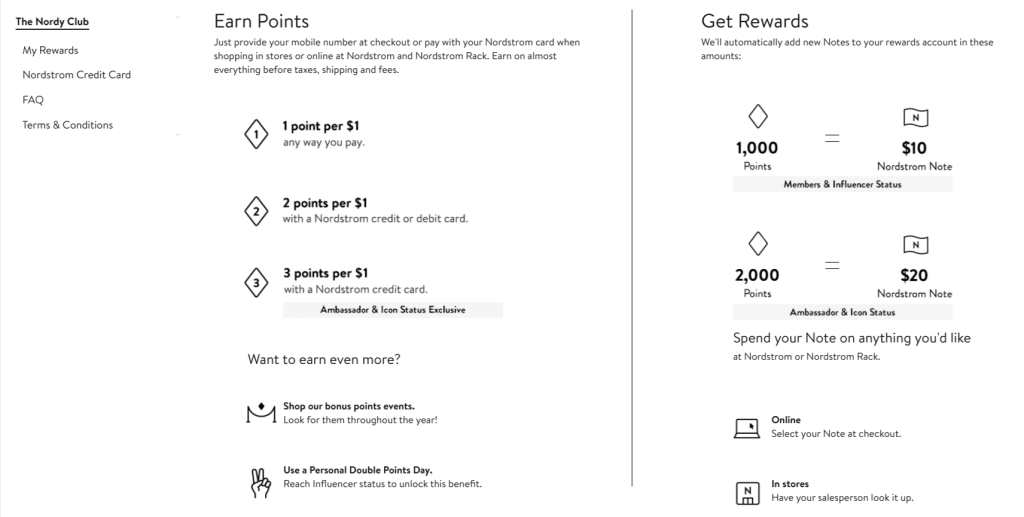
Nordstrom’s loyalty program is often cited as a gold standard in retail.
It’s a tiered points program that’s free to join, with additional benefits for those who become Nordstrom credit card holders.
All members earn points (one point per dollar, or more with the card) and receive discounts, perks and more.
Higher tiers (achieved by annual spend) get exclusive benefits such as bonus point days, access to VIP shopping events, and concierge services.
Nordstrom reports that this program drives enormous engagement, in fact, nearly 70% of Nordstrom’s total sales now come from Nordy Club members.
2. Nike – NikePlus Membership
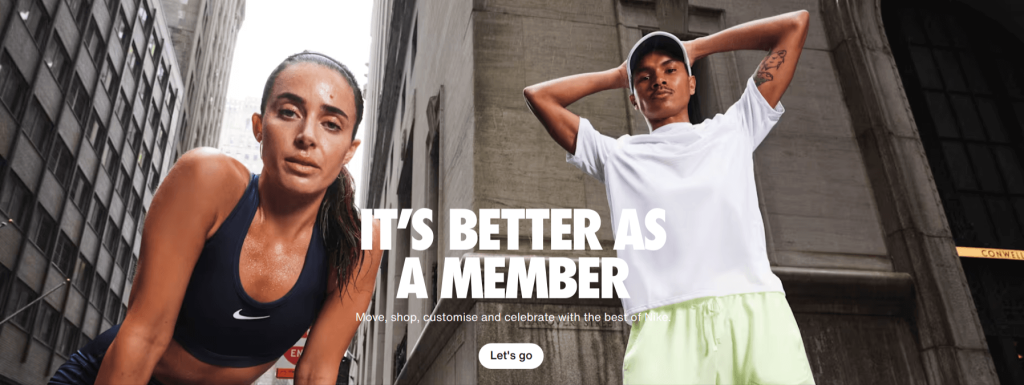
NikePlus is a free program that turns the concept of a loyalty program on its head – it’s less about earning points and more about offering member benefits.
Nike rewards its members with things like free expedited shipping, a special birthday reward, early access to new sneaker releases, personalized workout content through their apps, and exclusive products that only members can buy.
The program is deeply integrated with Nike’s suite of mobile apps (Nike app, SNKRS app, Nike Run Club, Nike Training Club). This has paid off tremendously for Nike.
They have over 100 million members globally who spend, on average, 3 times more than non-members.
It’s an excellent example of building loyalty through value-added experiences rather than a traditional points system.
3. Gap Inc. – Gap Good Rewards
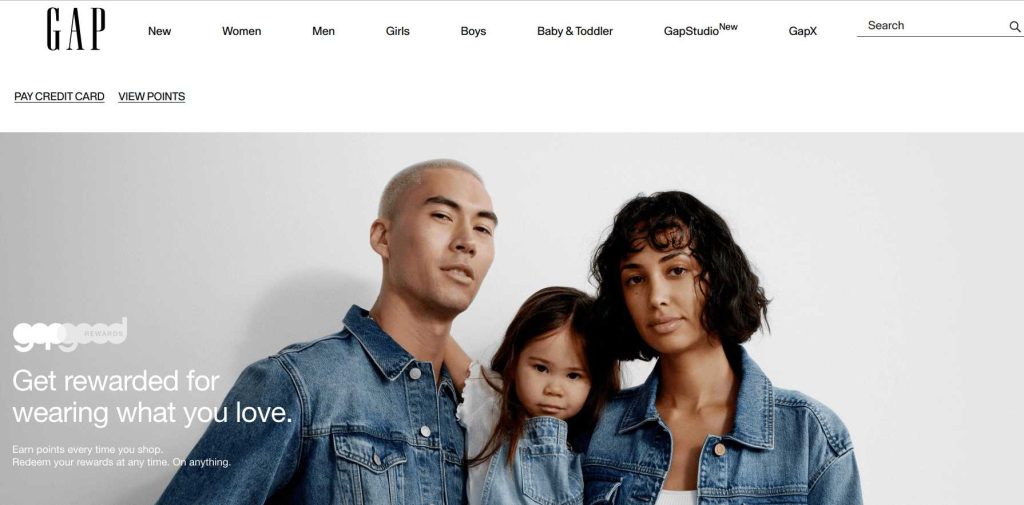
Gap Inc. revamped its loyalty approach by creating one unified program across all its brands, called Good Rewards.
Customers can earn points at any of the four brands and redeem rewards across them, which is highly convenient. They also integrated the program with the Gap Inc. credit card.
The program has three tiers: Core, Enthusiast, Icon, based on annual spend, with increasing benefits like free shipping or extra point bonuses at higher tiers.
This consolidation proved effective: within a year of launching One Membership, Gap Inc. added 19 million new members, growing to a total of 37 million members in 2022.
4. Michael Kors – KORSVIP
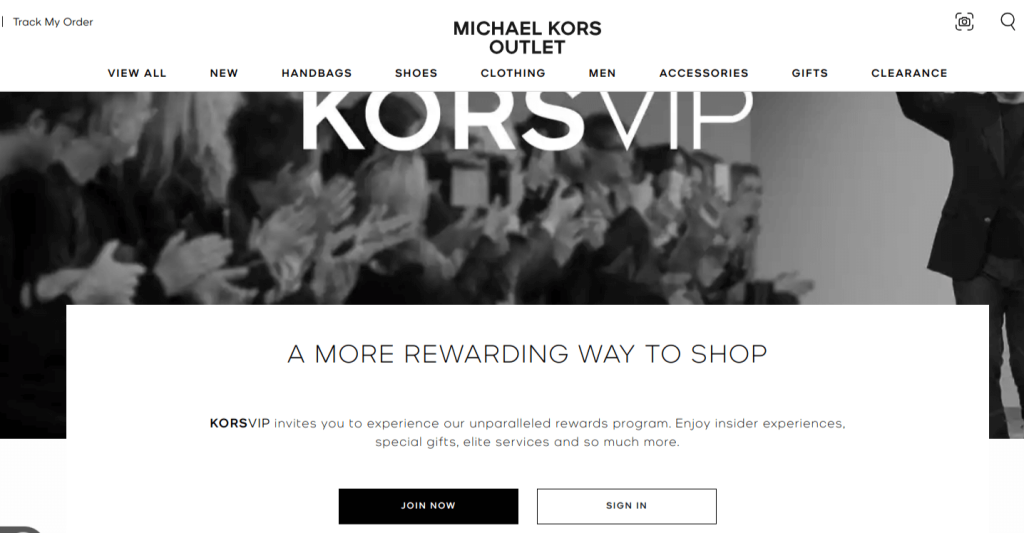
The KORSVIP program is free to join and has tier levels based on annual spending.
Even at the base level, members get benefits like free standard shipping and a birthday gift.
As customers spend more and rise to higher tiers, they unlock pretty luxurious perks – think private styling appointments, access to VIP sale events, early access to new launches, and even invitations to in-person events like fashion shows or store parties.
This program is a textbook case of aligning with customer aspirations for status; it makes an ordinary shopper feel like a celebrity client as they move up the ranks.
5. H&M – H&M Member Rewards
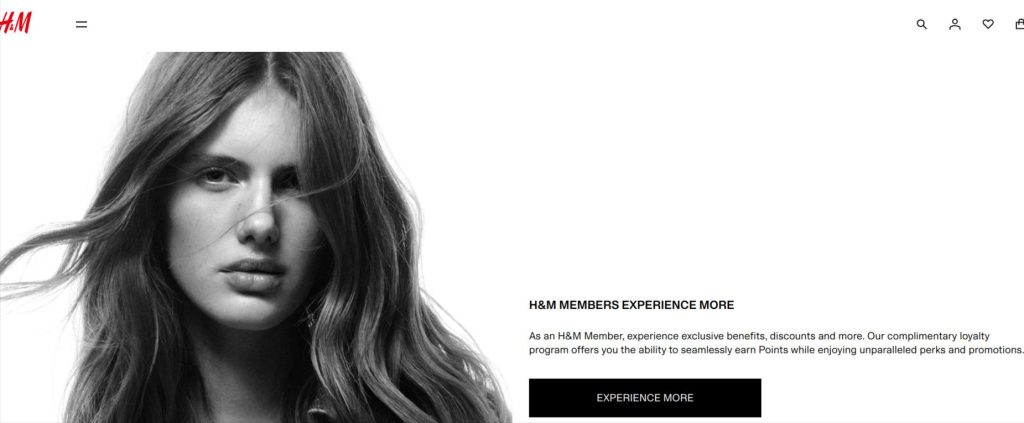
H&M operates a free points-based program with a two-tier structure (Member and Member+).
Members earn points on purchases, which convert into reward vouchers, and they get perks like 10% off their next purchase upon joining, exclusive member discounts, and a birthday reward.
H&M revamped this program in 2019 to add more value after listening to customer feedback.
H&M’s program shows that even for value-oriented shoppers, a loyalty program can succeed by providing steady, simple rewards and occasional special treats.
Next, let’s look a bit deeper into a couple of case studies to see how exactly loyalty programs have impacted fashion businesses.
Actionable Tips for E‑Commerce Fashion Owners
To improve your own loyalty program, here are some actionable tips you can apply:
- Start Simple, Then Expand: If you’re launching a new program, begin with a straightforward structure (e.g., points for purchases + a welcome + referral loyalty system).
- Choose the Right Platform: Research loyalty program software or features that integrate with your e‑commerce platform.
- Promote the Program Consistently: Don’t let your loyalty program be an afterthought in marketing. Add a banner or pop-up on your site inviting customers to join.
- Monitor Feedback and Adjust: Pay attention to what customers are saying about the program. Do they love the rewards? Are they asking for something (like free shipping) that isn’t offered?
- Highlight the Benefits (Not the Features): When communicating, focus on what’s in it for the customer. Instead of “Our program uses a tiered points structure,” say “Get rewarded every time you shop – join and earn points for discounts on styles you love!”
By following these tips, you’ll be on your way to building a loyalty program that resonates with your fashion customers.
Get started with WPLoyalty’s easy-to-use loyalty programs and reward your customer with points, discounts, freebies, and more.
Final Words
Fashion loyalty programs have evolved far beyond simple punch cards or basic point systems.
As we’ve seen from brands like Nordstrom, Nike, and H&M, the most effective loyalty strategies align closely with your brand identity while addressing your customers’ specific needs and behaviors.
Whether you choose a points-based system, a tiered VIP approach, or an experiential program, the key lies in delivering genuine value that resonates with your audience.
Also read:
- Customer Acquisition vs Retention: What Should Be Your Priority?
- 50 Best Referral Program Examples That Actually Work
- How to Reward Loyal Customers: 10 Best Ways
- B2B Loyalty Programs: Complete Guide With Types, Examples & How-Tos
- 5 Best WordPress Referral Plugins For 2025
- How To Create A WordPress Referral Program?
- 5 Best WordPress Loyalty Plugins 2025
Frequently Asked Questions
The best loyalty programs include Sephora Beauty Insider, Amazon Prime, Marriott Bonvoy, Starbucks Rewards, and airline frequent flyer programs that offer valuable rewards, easy point accumulation, and meaningful perks.
Gucci offer exclusive services and early access to collections for their highest-spending VIP clients through invitation-only relationship management.
Most luxury brands avoid traditional points-based loyalty programs, preferring invitation-only VIP experiences. Exceptions include Neiman Marcus InCircle, Nordstrom Nordy Club, and some luxury hotel programs offering exclusive benefits.
The 3 R’s of loyalty are Recognition (acknowledging customers), Rewards (offering benefits), and Relevance (personalizing experiences). These principles help brands build meaningful connections that drive customer retention and loyalty.
